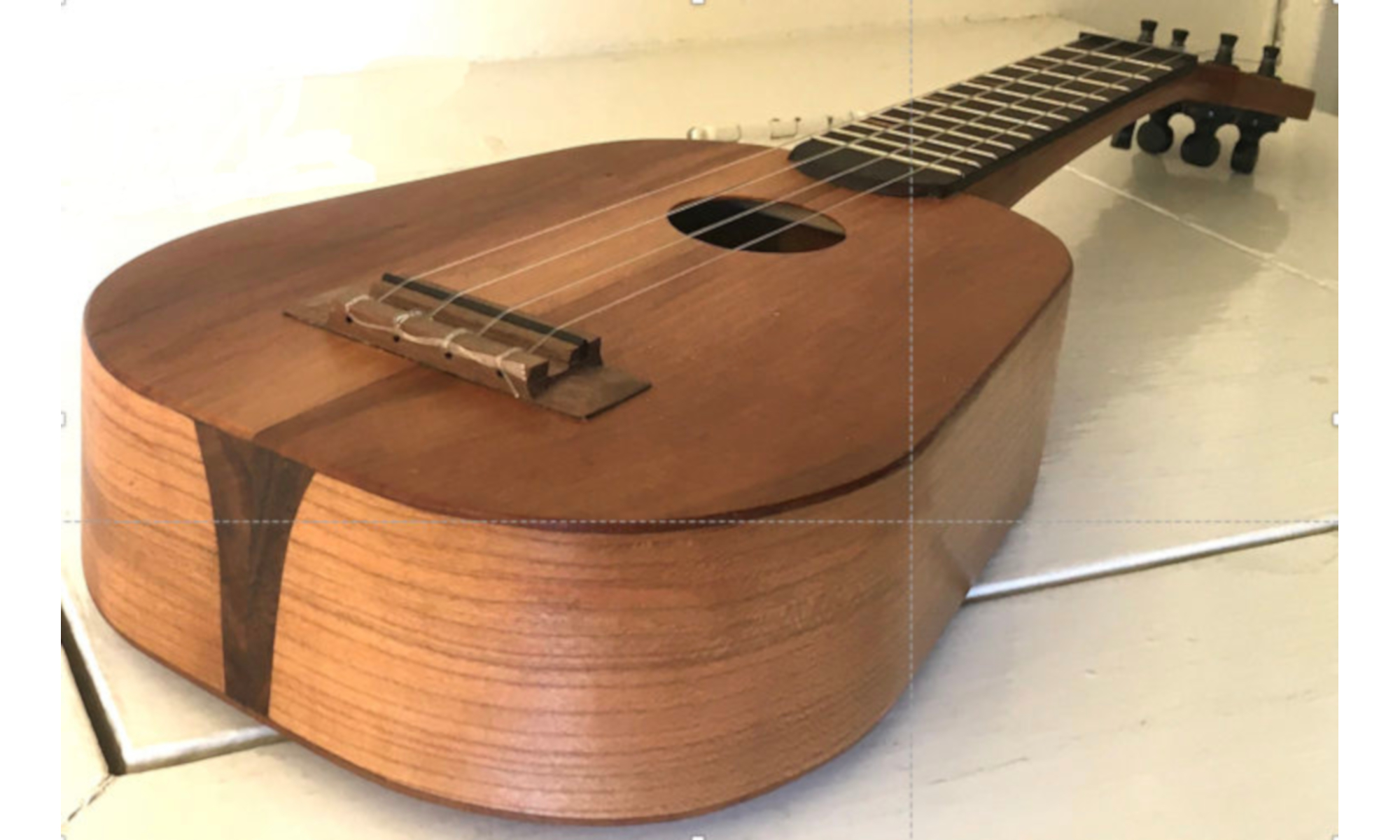5 Dec 2018: My second ukulele was inspired by some scrap pieces of cedar shakes in the attic of our 94-year old house. The exterior walls of the house are entirely made of cedar shakes, and some of the rejects were thoughtfully left in the attic. One late spring day, I rooted around until I found several pieces of the right size without cracks or other defects. Two of those pieces became the top board of the ukulele. I also used cedar for accent on the headstock, tail stripe, and heel cap. The sides and bottom are cherry, and the neck and bridge are mahogany. The saddle and nut are rosewood, as is the fretboard, with cherry fret markers on top and toothpicks on the side. I discovered with the first ukulele that the rosewood saddle, after use, developed slight divots under the strings, either from compression or wear. To avoid that, I added a spare piece of fret wire to the top of the saddle (after successfully doing the same on the saddle of the first ukulele). Completing the ukulele are Grover Champion friction pegs and Martin M600 fluorocarbon strings. The ukulele sounds somewhat warmer and louder than my first ukulele, which I attribute, in part, to the cedar tone wood.
5 Dec 2018: As mentioned in the narrative for my first ukulele, I had trouble clamping the bridge to the top board because my clamps were not quite deep enough. I solved that problem for my second ukulele by making my own bridge clamp. It did the trick.






